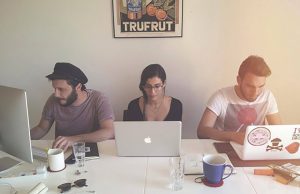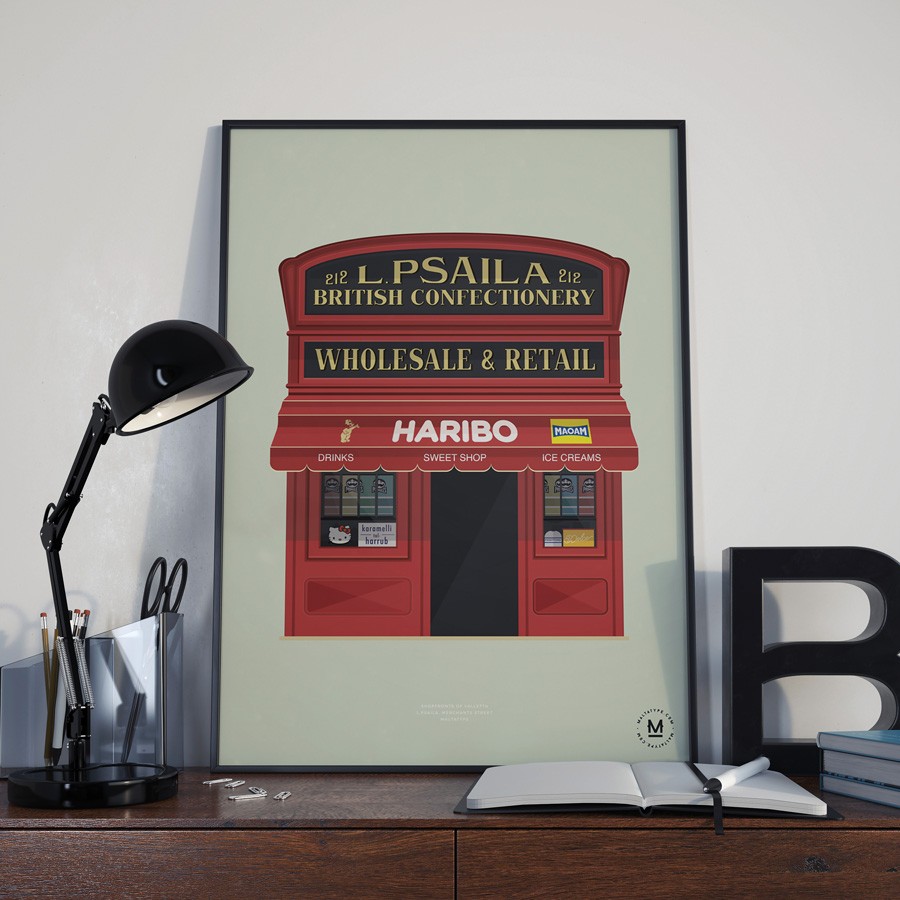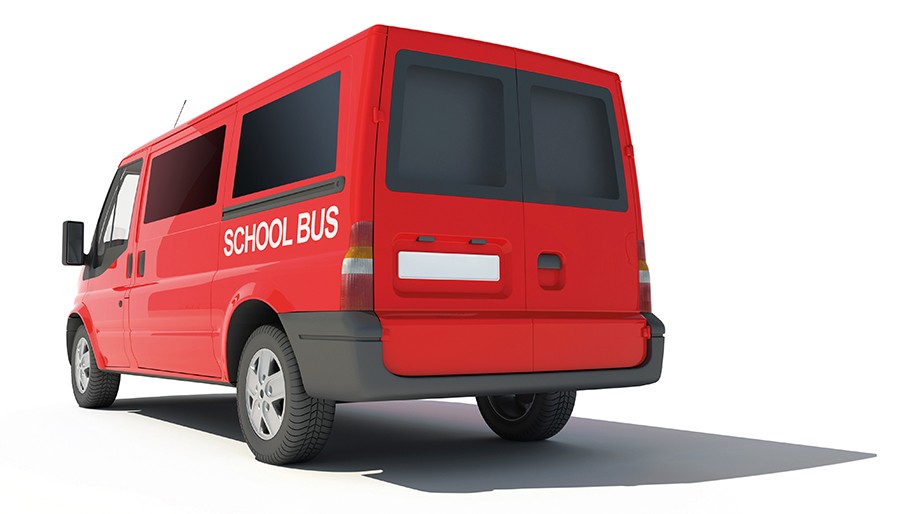Tourism has long been an integral part of the Maltese economy. But a big dose of change is sorely needed if we’re to keep the money coming in without selling our souls in the process. Julian Christopher Zarb explains why.
Behavioural Science: More than just buzzwords for Malta
Behavioural economics is on a global high, earning itself a prominent place in both public policy and business. Malta, however, doesn’t seem to be keeping up. Kora Muscat outlines why it should.
Capital letters

Valletta is being transformed into Malta’s vibrant cultural hub. With this welcome upheaval, however, the need to preserve the unique urban façades of the capital city’s old establishments has become critical.
Malta-based design group MaltaType is organising an exhibition on their study of shop sign production, as well as the typology and aesthetic of Valletta’s Strait Street signs, using them to create stylised prints of various shops.
The eponymously named exhibition will preserve the artefacts of Valletta’s modern history through a series of prints showing signs, shop fronts, and typography. The installation will lead from one room to the next, expanding on different aspects that constitute the process of designing and producing some of Valletta’s most iconic signs.
This project does not aim to emphasise reverting to past styles or practice, but to engender awareness of good design through historical study.
The exhibition is not intended to be a static event. Talks will focus on the history of design and the analysis of the aesthetic of the capital’s commercial establishments. Workshops will also take place, centring on the printing techniques used in the project. A main feature will be the launch of a newly-designed font created by MaltaType specifically for this event.
Preserving and studying past knowledge is key to generating innovative techniques. This project does not aim to emphasise reverting to past styles or practice, but to engender awareness of good design through historical study. Design is a rather young research topic in Malta, and a comprehensive study of local design is sorely needed as a baseline to build upon. The MaltaType exhibition is one such keystone.
 MaltaType will run from 25 May until the following Sunday at Splendid in Strait Street, Valletta. The project is part of the annual artistic programme of the Strada Stretta Concept, a Valletta 2018 Foundation project. The artistic director is lecturer Dr Giuseppe Schembri Bonaci (University of Malta), and the exhibition is curated by Nikki Petroni, while the MaltaType designers are Ed Dingli, Matt Demarco, and Katerina Karamallaki. For more information: www.maltatype.com
MaltaType will run from 25 May until the following Sunday at Splendid in Strait Street, Valletta. The project is part of the annual artistic programme of the Strada Stretta Concept, a Valletta 2018 Foundation project. The artistic director is lecturer Dr Giuseppe Schembri Bonaci (University of Malta), and the exhibition is curated by Nikki Petroni, while the MaltaType designers are Ed Dingli, Matt Demarco, and Katerina Karamallaki. For more information: www.maltatype.com
Owning what we do
By RIDT
Thomas Huxley wrote, ‘The medieval university looked backwards; it professed to be a storehouse of old knowledge. The modern university looks forward, and is a factory of new knowledge.’ Continue reading
The Politics of Dissent
Some look at the state of global politics and say the world has gone crazy. But dissatisfaction with the status quo has long been brewing. Dr George Vital Zammit tells us how and why it happened. Continue reading
THINK BIG: Can Malta produce a Nobel Laureate?

Iceland (population: 320,000) is proud of writer Halldor Laxness; the even smaller Faroe Islands (pop: 50,000) celebrates its physician and scientist Niels Ryberg Finsen. The combined population of these countries is smaller than Malta’s, yet they have each managed to secure Nobel Laureates: Laxness in Literature in 1955; Finsen in Medicine in 1903. Small size may be a handicap, but—as the Iceland and Faroe examples attest—it is not an insurmountable obstacle. Small size should not prove to be a cheap excuse. So the question is: can Malta produce a Nobel Laureate?
Thinking big can be a powerful motivator. Grand ideas can push publics, enterprises, and governments to achieve the unthinkable. Believe in the impossible, advised the historian Max Weber, and then the possible might just become true. Landing a man on the moon before the end of the decade inspired the US Space Programme in the 1960s. The Live Aid Concerts in 1985 delivered £150 million in famine relief. And the One Laptop Per Child (OLPC) Initiative has equipped 2.5 million children, and counting, across the world.
Malta needs ‘think big’ projects to galvanise the nation. Securing a Nobel Laureate could be one. Developing an underground subway system (and linking Malta to Gozo in the process) could be another. Such projects need not be mutually exclusive. Their trademark would be their ability to engage public opinion, foster national pride, and raise the game to the next level. Naturally, people will continue to talk about politics, the weather, the traffic, the guy or gal next door… but also about these grand accomplishments. Of course, these projects will be controversial; they will have as many sympathisers as dissenters and critics. So? What’s new? That is how it should be.
Securing our political independence was one such dream for the 1960s. Bringing an end to our fortress economy was another aspiration for the 1970s. Joining the European Union was a third. Valletta Capital of Culture for 2018 may be a fourth and is an active project. What’s cooking in the Kitchen of Big and Bold Ideas for Malta for the next few years?
We need to think ahead. Apathy is dangerous, and we need big ideas to keep it at bay.
By the way, St Lucia (population: 150,000) has not one, but two Nobel Laureates: Arthur Lewis for Economics in 1979 and Derek Walcott (born in 1930, still alive at the time of writing) for Literature in 1992.
That amazing Baroque world
The Baroque period was a time of great upheaval. Monarchs believed in the divine right to rule, a notion continuously threatened by the relentless spread of the Ottoman Empire. Civilisations clashed like never before, opposing religious ideals stoking that vicious fire. Curiously, this was also the age when science, technology, and art were making their own grand strides. The cannon and the musket altered military landscapes. The studies of Descartes, Kepler, and Newton revolutionised thought. Borromini, Bernini, Guarini, and Caravaggio altered the artistic world.
Road to resilience
Hardships do not befall us all in equal measure. Cassi Camilleri talks to Prof. Carmel Cefai about his work at the Centre for Resilience and Socio-Emotional Health and the dedicated curriculum that seeks to impart the skill of resilience to those who need it most.
Continue readingTime to go

The start of a new scholastic year can bring about feelings of excitement to some and dread to others. After the relatively quiet summer months, children need to start making their way to school in the mornings. The result is traffic, an ugly monster that brings Malta to a standstill every morning. One solution could be the grouping of school trips to and from homes.
Kristina Mifsud (supervised by Ms Amanda Borg) decided to investigate the issue of traffic congestion caused by school transport by studying a hypothetical scenario in which the free school transport policy for government-run schools was extended to church and independent schools. First she conducted a survey: parents who have children at church and independent schools answered a questionnaire. These parents drove their children to school using their private vehicles. The results were very promising with more than 70% of mothers indicating that they would switch to the government-provided school transport if it was implemented. Those who said they would not take up the service gave three main reasons for this: mistrust of minivan drivers, their children being too young, and that the drive to school was a distraction-free time with their children.
Then Mifsud estimated the benefits and costs for the service using the take-up percentage from the questionnaire. The list of benefits was plentiful; time and fuel would be saved, while air pollution and environmental costs would be reduced. The costs included the initial investment (minivans), fuel, maintenance, and staff payment. When compared, the total estimated benefits far exceeded these costs! For every €1 invested by the government into this school transportation system, society would reap €2.66 in benefits. Additionally, the direct cost (time and fuel) of individual school runs per child per year amounts to €993.22, based on the average time taken per child of 48.8 minutes per school day. Given that the average fee by minivan drivers for a year worth of school runs is around €600, the minivan school transport option is much more sensible, economically speaking, and all the more so with regards to protecting our environment and solving the traffic headache.
This research was carried out as part of a Bachelor of Commerce in Economics at the Faculty of Economics, Management and Accountancy, University of Malta.
Where is the crowd?
Athletes who are cheered on during sporting activities are likely to perform better than athletes who don’t. The HeartLink project is investigating how to remotely cheer athletes while they are participating in sporting events. Dr Franco Curmi writes about his work for the HeartLink project.
Continue reading



 MaltaType will run from 25 May until the following Sunday at Splendid in Strait Street, Valletta. The project is part of the annual artistic programme of the Strada Stretta Concept, a Valletta 2018 Foundation project. The artistic director is lecturer Dr Giuseppe Schembri Bonaci (University of Malta), and the exhibition is curated by Nikki Petroni, while the MaltaType designers are Ed Dingli, Matt Demarco, and Katerina Karamallaki. For more information:
MaltaType will run from 25 May until the following Sunday at Splendid in Strait Street, Valletta. The project is part of the annual artistic programme of the Strada Stretta Concept, a Valletta 2018 Foundation project. The artistic director is lecturer Dr Giuseppe Schembri Bonaci (University of Malta), and the exhibition is curated by Nikki Petroni, while the MaltaType designers are Ed Dingli, Matt Demarco, and Katerina Karamallaki. For more information: 






